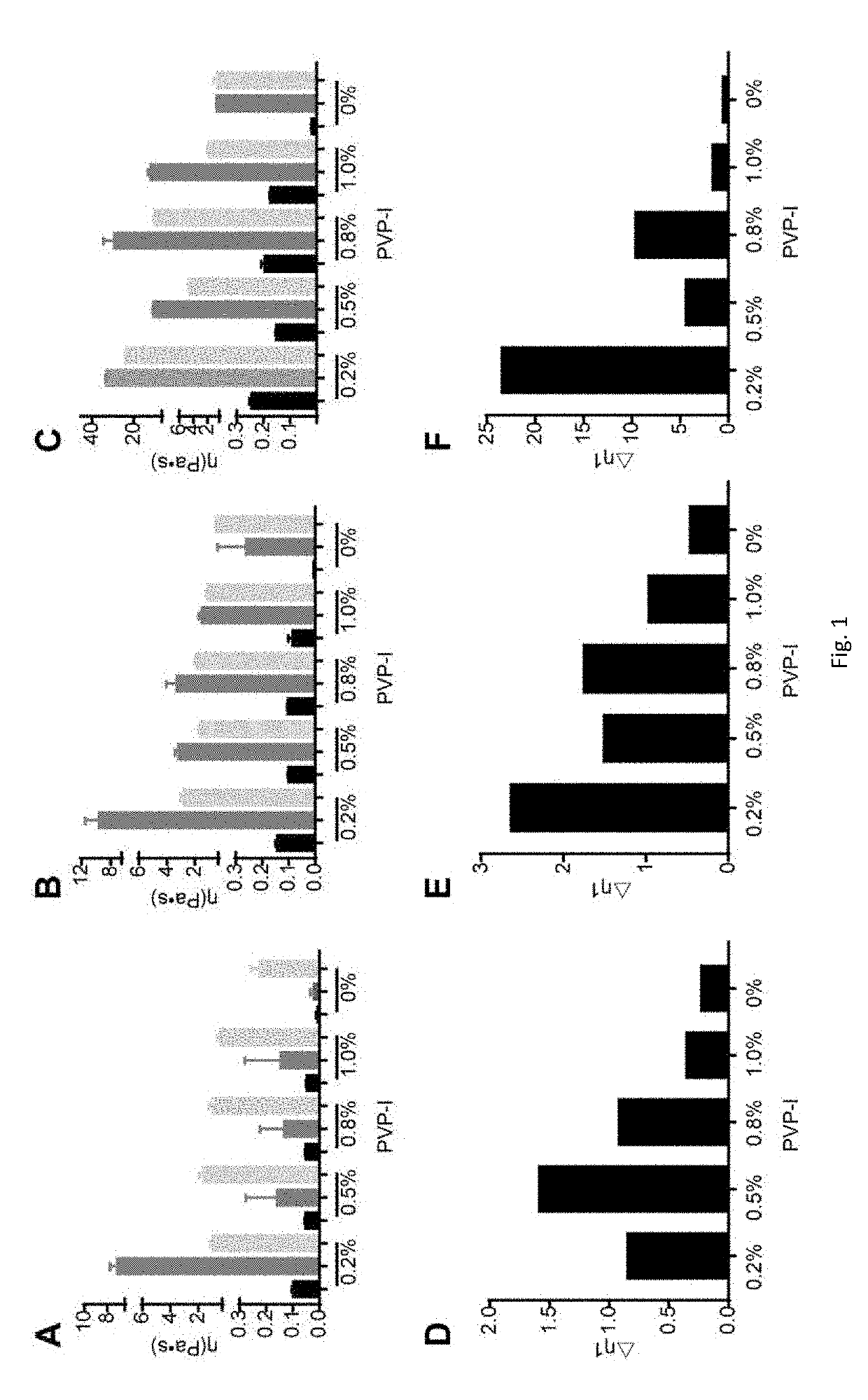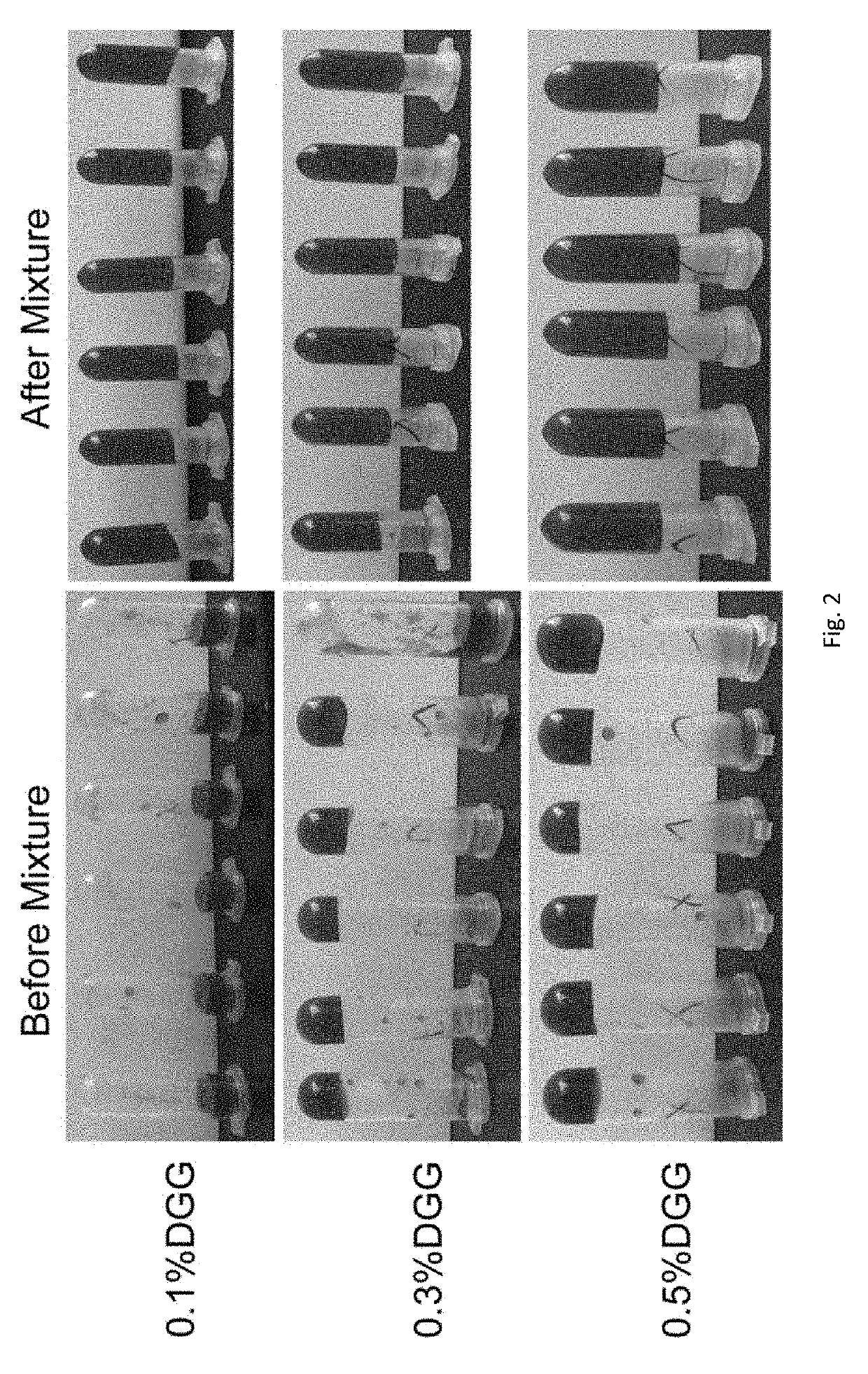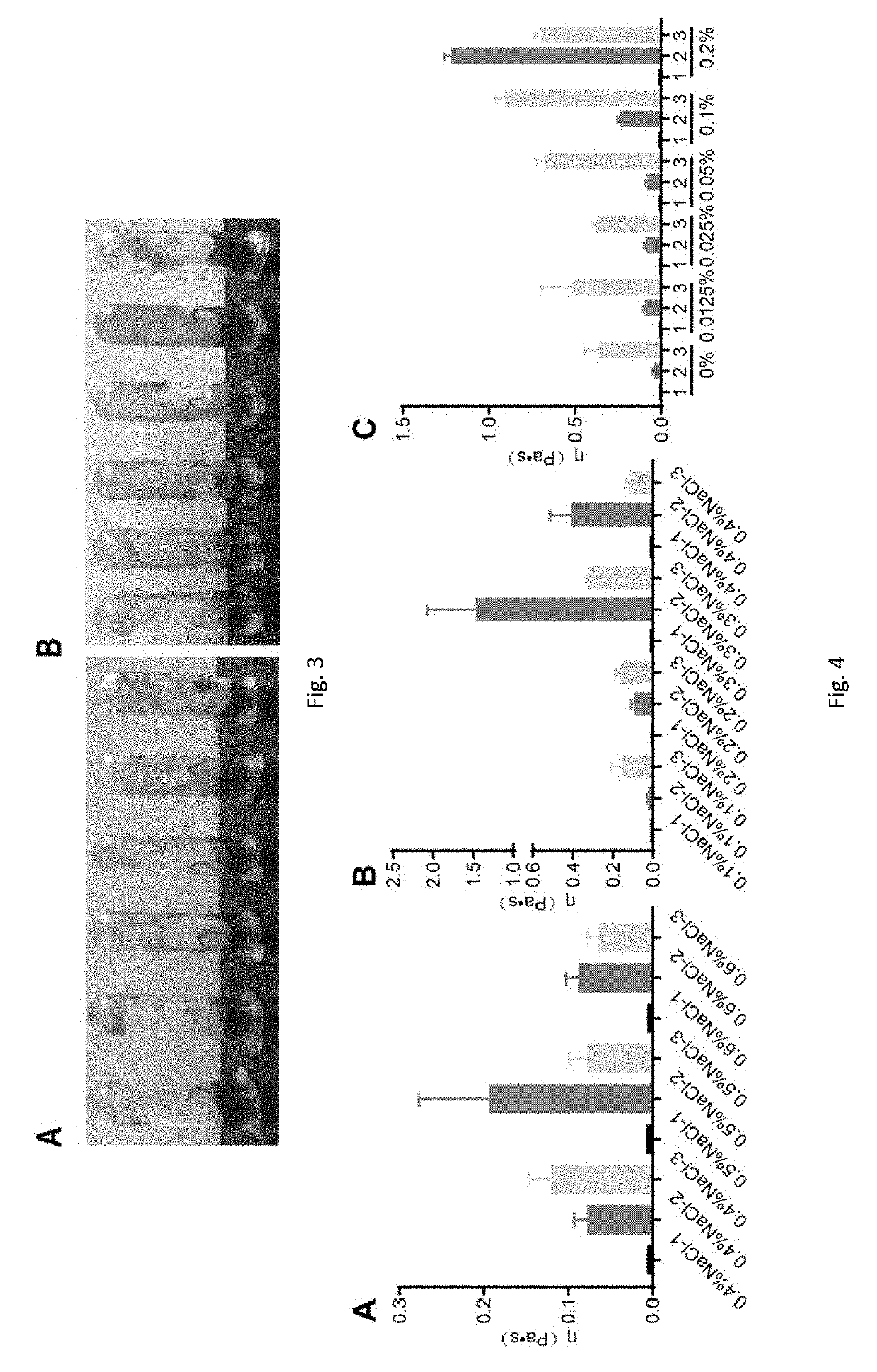In Situ Gel-Forming Pharmaceutical Compositions and Uses Thereof for Sinus Diseases
a pharmaceutical composition and composition technology, applied in the field of sinus diseases, can solve the problems of ineffective treatment of multiple drug-resistant rhinosinusitis, significant physical symptoms, substantial functional impairment, etc., and achieve the effects of increasing the bioavailability of steroids, increasing the stability of steroids, and increasing solubility
- Summary
- Abstract
- Description
- Claims
- Application Information
AI Technical Summary
Benefits of technology
Problems solved by technology
Method used
Image
Examples
examples
[0070]The compositions of this invention containing povidone iodine and budesonide are formulated with one or more ion-sensitive in-situ gel forming materials such as polysaccharides which allow increased residence time of the compositions in the nasal cavity. The compositions are optimized with povidone iodine and budesonide by investigating their viscosity vs. the concentrations of the gel matrix at 25° C., before and after addition of simulated nasal fluid (SNF), and under physiological conditions after addition of simulated nasal fluid (34° C.-SNF). A gel-forming matrix needs to have a higher viscosity after addition of SNF at 34° C. than its viscosity at 25° C. before addition of SNF. Only such a gel matrix can potentially form an in-situ gel.
examples 1
Screening Suitable PVP-I Concentrations in the Formulation
[0071]0.064% (w / w) budesonide and 0.25% (w / w) NaCl were into compositions, gellan gum concentration was at 0.1%, 0.3%, 0.5% (w / w) separately, PVP-I concentration was set at 0.2%, 0.5%, 0.8%, 1.0% (w / w) separately. Different concentrations of gellan gum and PVP-I were mixed separately to investigate the basic properties of the compositions of this invention.
TABLE 1Composition DetailsBudesonidNaCl GlycerinGellan GumPVP-I (w / w)(w / w)(w / w)(w / w)(w / w)TromethamineComposition 10.064%0.25%2.3%0.1%0.2%pH adjusted to0.5%4-5.50.8%1.0%Composition 20.064%0.25%2.3%0.3%0.2%0.5%0.8%1.0%Composition 30.064%0.25%2.3%0.5%0.2%0.5%0.8%1.0%
[0072]The sample viscosity was investigated before and after mixing with the simulating nasal fluid (SNF) at a high shear rate (100 / s) at 25° C. and a low shear rate (0.1 / s) at 34° C. This was to simulate the change of viscosity before and after the sample is sprayed into the nasal cavity and the drug contacts the ...
example 2
Formulation Screening of DGG and NaCl Amount in the Formulations
[0075]The weighted micronized budesonide and glycerin were fully mixed, 2% PVP-I solution and pure water were added to the total sample weight without gellan gum weight. 1% gellan gum solution was added to the total weight under stirring. pH was adjusted to 4-5.5 with tromethamine and hydrochloric acid. Mother liquor of each group was prepared according to the compositions shown in Table 5 (without NaCl), and 50 μL of NaCl solutions of different concentrations were added into 2 mL mother liquor to make the final concentration of NaCl in the compositions in the range of 0%-0.6%. Sample solutions with different concentrations of NaCl are shown in Table 6.
TABLE 5Composition DetailsGellanBudesonidePVP-IGlycerinGumNaCl(w / w)(w / w)(w / w)(w / w)(w / w)TromethamineComposition 10.064%0.5%2.3%0.1% 0%pH adjusted to 0.1%4-5.5 0.2% 0.3% 0.4% 0.5% 0.6%Composition 20.064%0.5%2.3%0.3% 0% 0.1% 0.2% 0.3% 0.4%Composition 30.064%0...
PUM
| Property | Measurement | Unit |
|---|---|---|
| temperature | aaaaa | aaaaa |
| total weight | aaaaa | aaaaa |
| viscosity | aaaaa | aaaaa |
Abstract
Description
Claims
Application Information
 Login to View More
Login to View More - R&D
- Intellectual Property
- Life Sciences
- Materials
- Tech Scout
- Unparalleled Data Quality
- Higher Quality Content
- 60% Fewer Hallucinations
Browse by: Latest US Patents, China's latest patents, Technical Efficacy Thesaurus, Application Domain, Technology Topic, Popular Technical Reports.
© 2025 PatSnap. All rights reserved.Legal|Privacy policy|Modern Slavery Act Transparency Statement|Sitemap|About US| Contact US: help@patsnap.com



